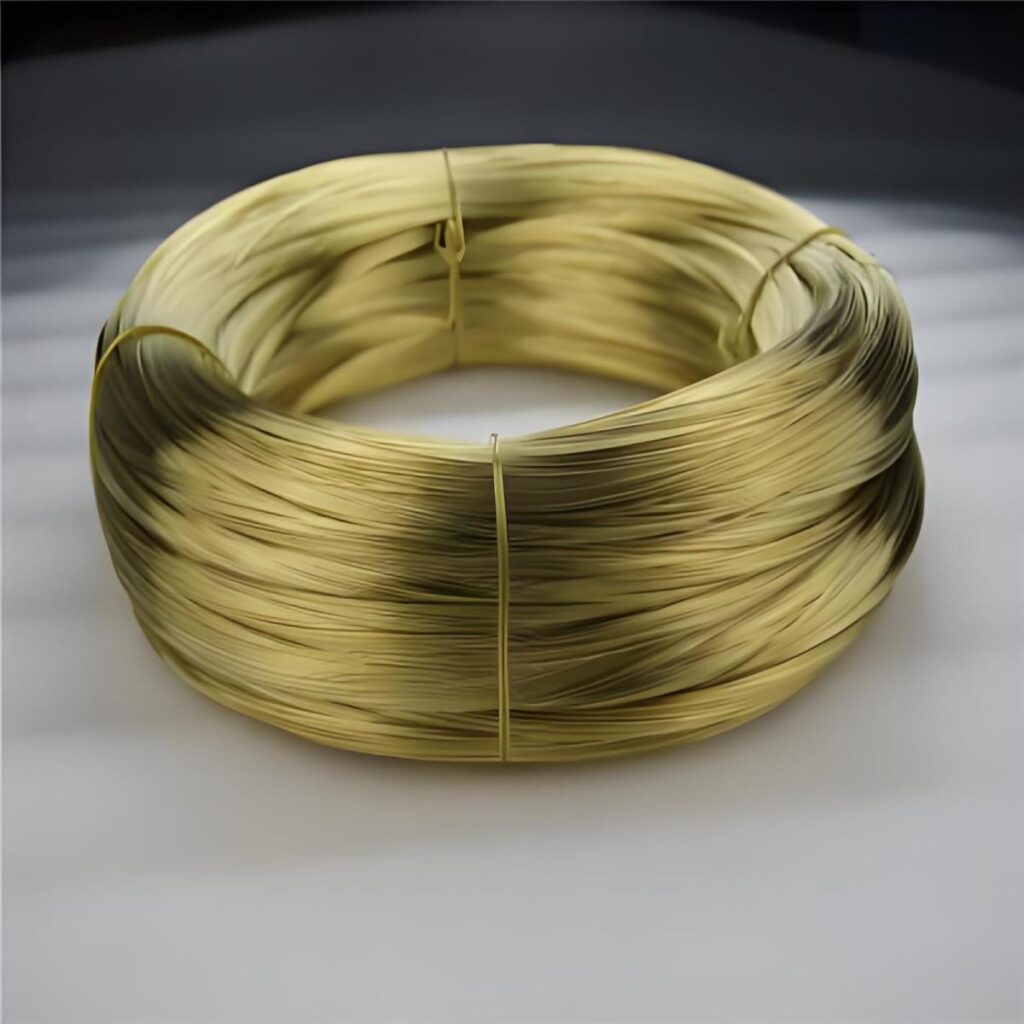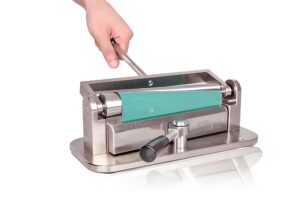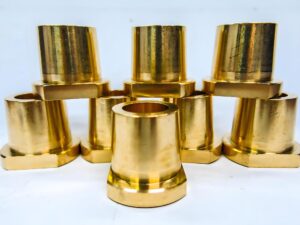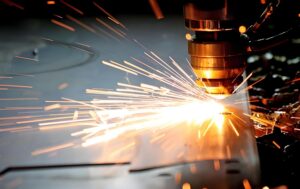What is Electrolytic Copper?
Electrolytic copper is a highly purified form of copper produced through electrolysis, a process that refines raw copper into a near-pure state, typically achieving purity levels of 99.9% or higher. The process begins with a copper anode, often derived from mined copper ore, placed in an electrolyte solution. An electric current is applied, causing copper ions to migrate from the anode to a cathode, where they deposit as pure copper. This method removes impurities like sulfur, iron, and other trace elements, resulting in a metal that meets stringent quality standards.
The electrolysis process is both precise and efficient, ensuring the copper’s suitability for applications requiring high conductivity and durability. Industries worldwide rely on electrolytic copper for its consistency, making it a preferred choice for electrical components, wiring, and intricate machining projects. Its production reflects a blend of science and engineering, transforming raw material into a refined product that powers modern technology.
Chemical Composition of Electrolytic Copper
The chemical composition of electrolytic copper is what sets it apart from other forms of copper. With a purity level often exceeding 99.9%, it contains minimal impurities, ensuring optimal performance in demanding applications. The primary element, of course, is copper (Cu), but trace amounts of other elements may remain, depending on the refining process. These impurities, if present, typically include:
- Oxygen: Often less than 0.04%, as oxygen can affect conductivity.
- Sulfur: Reduced to trace levels, typically below 0.005%.
- Iron: Kept below 0.005% to maintain purity.
- Silver or Gold: Occasionally present in minute quantities, often less than 0.001%.
The strict control of these impurities ensures that electrolytic copper delivers unmatched electrical and thermal conductivity. Manufacturers, especially in precision machining, value this consistency, as even small variations in composition can impact performance in high-stakes applications like circuit boards or electrical connectors.
Properties of Electrolytic Copper
Electrolytic copper’s widespread use stems from its exceptional physical and mechanical properties, which make it a favorite in industries ranging from electronics to construction. Below, we explore these properties in detail.
Physical Properties
Electrolytic copper boasts a range of physical characteristics that make it ideal for diverse applications. Its standout feature is its electrical conductivity, which ranks among the highest of any metal, second only to silver. With a conductivity rating of approximately 58 MS/m (megasiemens per meter), it’s a go-to material for electrical wiring and components.
Other key physical properties include:
- Thermal Conductivity: Electrolytic copper efficiently transfers heat, making it suitable for heat sinks and thermal management systems.
- Density: At 8.96 g/cm³, copper is relatively dense, providing structural stability in machined parts.
- Color and Appearance: Its reddish-orange hue is iconic, though it may develop a patina over time unless treated.
- Melting Point: Approximately 1,085°C (1,985°F), allowing it to withstand high temperatures in industrial processes.
These properties make electrolytic copper a versatile choice for applications requiring both functionality and aesthetic appeal.
Mechanical Properties
Mechanically, electrolytic copper is both strong and adaptable. Its mechanical properties include:
- Ductility: Copper can be drawn into thin wires without breaking, a critical feature for electrical cables.
- Malleability: It can be shaped and formed into complex components, ideal for precision machining.
- Tensile Strength: Typically ranges from 200 to 250 MPa, depending on the grade and processing.
- Hardness: While naturally soft, electrolytic copper can be work-hardened to increase its durability.
These characteristics allow manufacturers to craft intricate parts with tight tolerances, ensuring reliability in everything from electrical connectors to decorative elements.
What Are Types of Electrolytic Copper Grades
There are several recognized grades of electrolytic copper, standardized for specific uses across industries. These include:
C11000 (Electrolytic Tough Pitch Copper – ETP)
- Most common grade of electrolytic copper
- Contains 99.90% copper and around 0.02% oxygen
- High conductivity and moderate formability
- Suitable for electrical wiring, bus bars, and connectors
C10200 (Oxygen-Free Copper – OFC)
- Copper content of 99.95% or higher
- No oxygen, offering improved resistance to hydrogen embrittlement
- Excellent for high-vacuum applications and sensitive electronic components
C10100 (Oxygen-Free Electronic Copper – OFE)
- Highest purity copper (99.99%)
- Used in semiconductors, superconductors, and advanced electronics
C10300, C10400 (Deoxidized High Phosphorus Copper – DHP)
- Contains small amounts of phosphorus to improve weldability
- Lower electrical conductivity but good corrosion resistance
- Used in plumbing and heat exchangers
Choosing the correct grade depends on the performance requirements of the final application, especially in terms of conductivity, machinability, and corrosion resistance.
What is Electrolytic Copper Used For?
Electrolytic copper’s diverse applications span a range of industries due to its unique blend of conductivity, strength, and machinability.
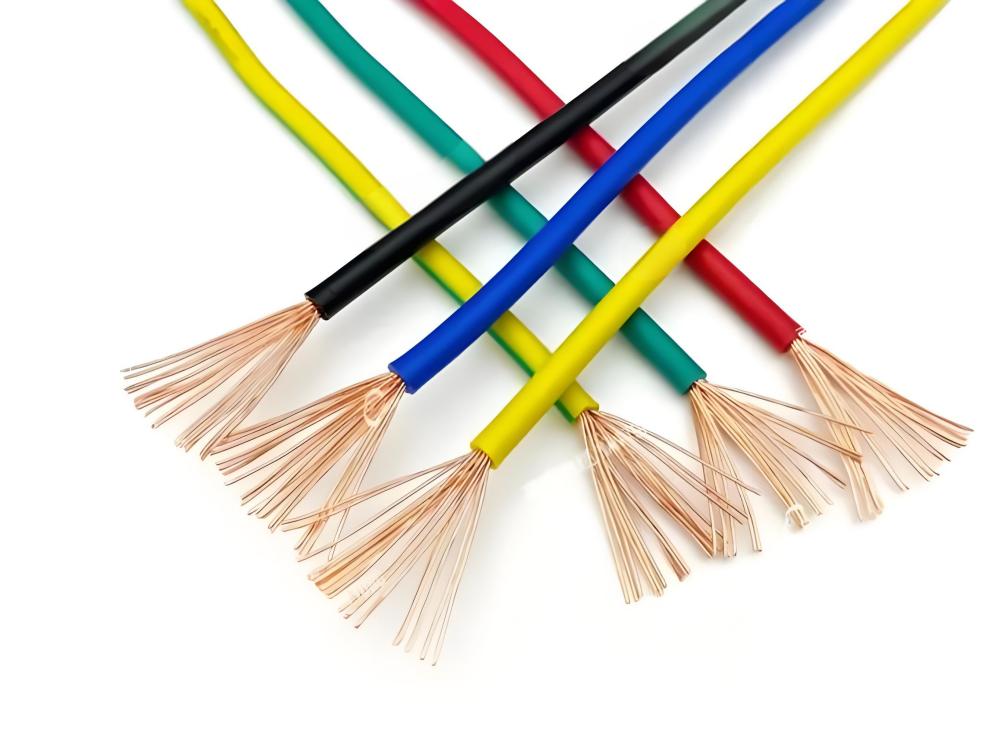
- Power cables and wires: Its high conductivity allows minimal energy loss during transmission.
- Printed circuit boards (PCBs): Thin layers of electrolytic copper are etched onto non-conductive substrates to form intricate circuits.
- Transformers and motors: Windings made from copper ensure efficiency and longevity.
- Automotive and Aerospace
- Automotive wiring systems: Ensures efficient power distribution and signal transmission in vehicles.
- Aerospace systems: Lightweight and highly conductive, electrolytic copper is used in avionics and satellite communications.
- Industrial Machinery
- Machined components: High precision parts benefit from its ductility and ease of machining.
- Heat exchangers and radiators: Its thermal conductivity improves heat transfer efficiency.
- Renewable Energy
- Solar panels: Conductive layers of copper improve energy collection and conversion.
- Wind turbines: Copper is used in the windings of generators.
- Plumbing and Construction
- Copper pipes and fittings: Durable and corrosion-resistant, ideal for both hot and cold water systems.
- Architectural elements: Used in roofing, gutters, and decorative finishes.
Advantages and Disadvantages of Electrolytic Copper
Like any material, electrolytic copper has its strengths and limitations. Understanding these can help industries make informed decisions about its use.
Advantages
- High Conductivity: Its exceptional electrical and thermal conductivity makes it ideal for energy-efficient applications.
- Corrosion Resistance: Copper resists corrosion in many environments, ensuring long-term durability.
- Workability: Its ductility and malleability allow for easy shaping and machining, reducing production costs.
- Recyclability: Copper is 100% recyclable without loss of quality, supporting sustainable manufacturing practices.
- Aesthetic Appeal: Its warm color enhances its use in decorative and architectural applications.
Disadvantages
- Cost: High-purity electrolytic copper can be more expensive than other metals, impacting project budgets.
- Weight: Its density makes it heavier than alternatives like aluminum, which may be preferred in weight-sensitive applications.
- Oxidation: While corrosion-resistant, copper can develop a patina over time unless treated, which may affect appearance.
- Softness: In its pure form, copper is relatively soft, requiring alloying or hardening for certain structural applications.
By weighing these factors, industries can determine whether electrolytic copper is the right choice for their specific needs, balancing performance with practical considerations.
Why Electrolytic Copper Matters in Modern Industry
When it comes to precision machining involving high-performance materials like electrolytic copper, expertise, technology, and reliability are essential. Precionn, a leading name in the global machining industry, provides all three in abundance. With a dedicated international team and a commitment to quality, Precionn helps customers around the world bring complex copper-based designs to life.
Our capabilities include CNC milling, turning, and high-precision fabrication, all supported by cutting-edge technology and industry-leading quality control processes. Whether you need intricate electronic parts or durable industrial components, Precionn ensures that each piece meets the most demanding specifications. We understand the characteristics of materials like electrolytic copper and apply our knowledge to deliver unmatched machining results.
Explore our website to learn more about our services and how we can assist your business in achieving precision with electrolytic copper and beyond.

